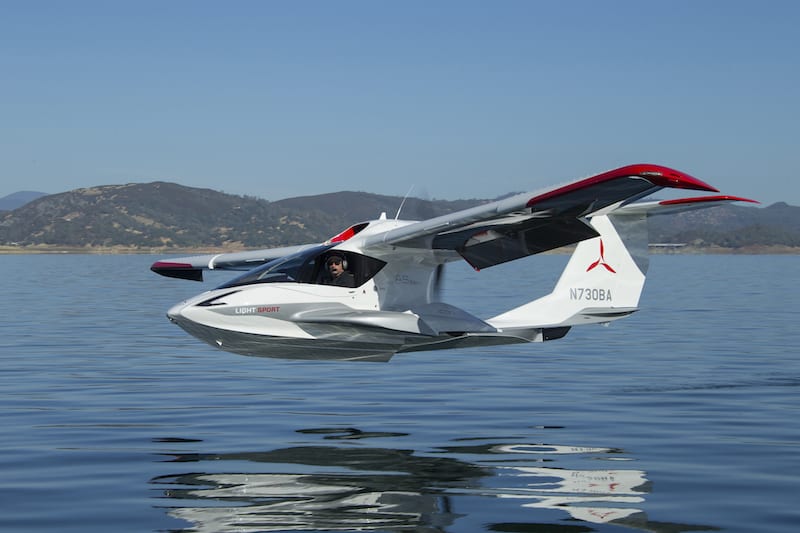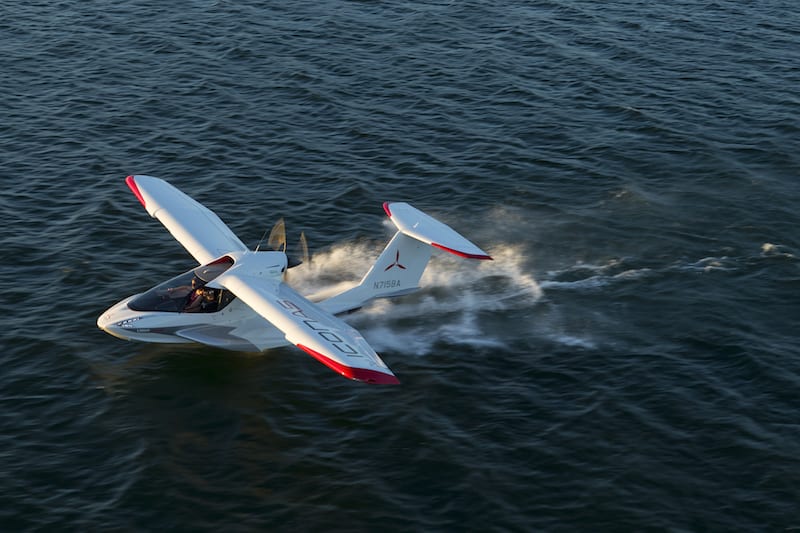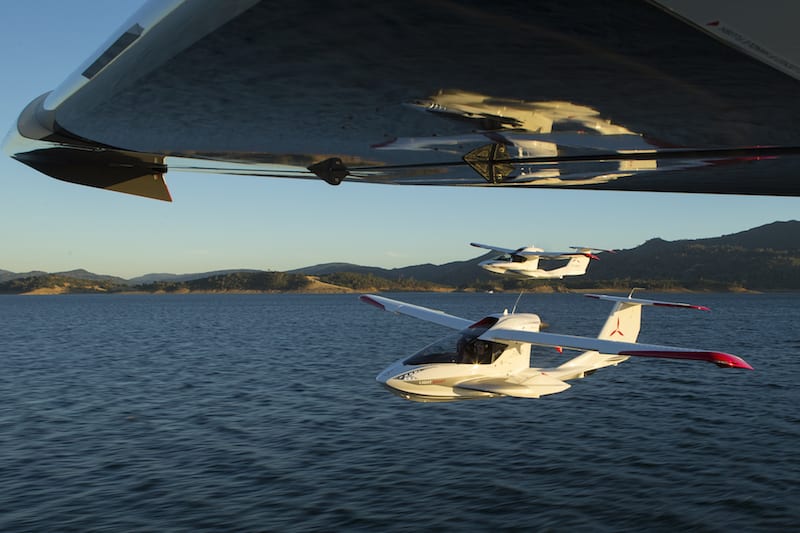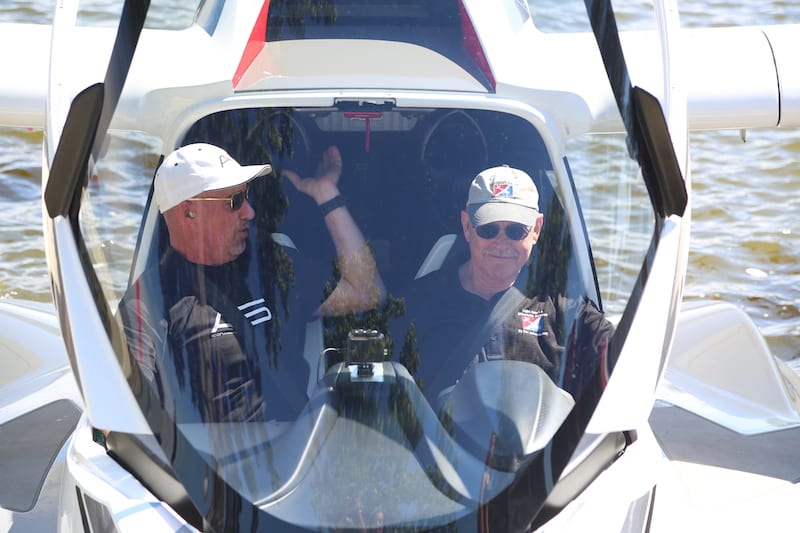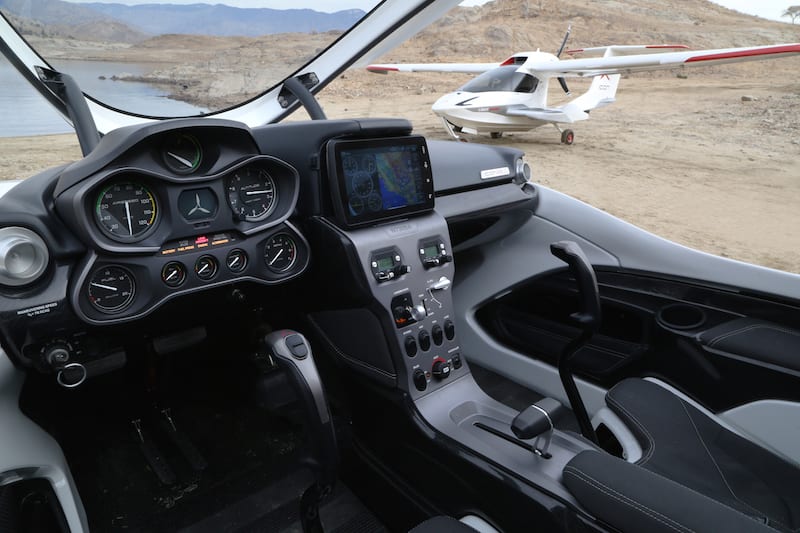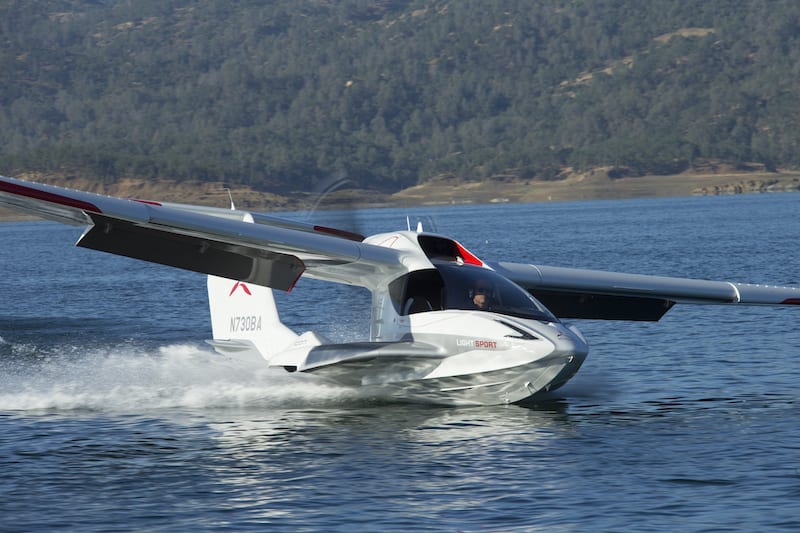
The Light-Sport Aircraft (LSA) sector is aviation’s newest and most prolific with numerous outstanding aircraft available from Europe and the United States.
Europeans seemed to own the category at first because regulations on the other side of the Atlantic permitted companies to fully build very similar aircraft. When the FAA caught up by releasing the Sport Pilot/Light-Sport Aircraft regulation in 2004, a tsunami of foreign models arrived on American shores.
In more recent years, U.S. companies made the transition from supplying aircraft kits to manufacturing ready-to-fly models. The two activities are very distinct business models, so the transition took some years.
With both sets of skills now well developed, many American companies are providing have-it-your-way airplanes in either kit form or factory built. To the FAA’s credit, the regulation is surprisingly accommodative of such innovative methods.
As we move deeper into the second decade of LSA, what might be called third generation designs are emerging and a number of these are something to behold.
A third-gen design is one created specifically to fit in the new category and one of the best known examples is Icon Aircraft’s A5 LSA seaplane. I got the chance to fly the production version at this year’s AirVenture in Oshkosh.
SPLASH AND GO
At the Experimental Aircraft Association‘s big summer event, I flew the A5 from Lake Winnebago a mile or so east of Wittman Field. Conditions were not perfectly tuned to ensure a good experience as any manufacturer might prefer. Instead we had winds blowing 12 knots, gusting as high as 20. The water rippled with waves sometimes a foot high. For many light seaplanes this could present a significant challenge, though A5 handled the bumps gracefully.
Icon chose to conduct its demo flying away from all the other flying locations associated with Oshkosh. It had a well-staffed operation to achieve steady demo flying. Typically variable summer weather in Wisconsin joined with the company’s mission to take aloft a reported 150 waiting owners to force a couple schedule delays. I finally got airborne at the end of the week-long event.
Most pilots want to hear the nuts and bolts about any airplane they might be contemplating for purchase, including water takeoffs and landings, in-flight maneuvering, control forces, slow flight qualities, stalls (such as they are in A5), and the interior of the airplane, including Icon’s highly emphasized Angle of Attack (AoA) indicator.
Thanks to shrewd marketing and advanced planning, Icon Aircraft grabbed the golden ring, capturing no less than five of aviation’s top magazine covers in the same month. This is the aviation industry equivalent of winning horse-racing’s Triple Crown. Post-Oshkosh, Icon stayed busy flying a number of journalists from non-aviation publications.
If you read those pilot reports, you observed that every writer gave glowing reviews. Were they swayed by Icon’s superb media handling or is A5 that good? It’s a valid question.
After I returned from my flight more than one person hearing my also-complimentary assessment said, “Aw, you just drank the Icon Kool-Aid.”
You may believe I succumbed to the California company’s “reality distortion field” — a phrase attributed to another great marketer, Steve Jobs — but I have overwhelmingly good things to say about A5.
The LSA is artistically achieved, flies well, is comfortable, and oozes outdoor sports sex appeal. The company nailed the stall characteristics that can confound new pilots, who have been the company’s stated primary target since I first met CEO Kirk Hawkins while on the EAA Sport Pilot Tour back in 2005 … a time when he remembers being “just one guy with a business card.”
CONSIDER THE AOA
I flew with Craig Bowers, an ex-military jet jock. His military training showed clearly, and that background gave him a grounding in the use of an AoA indicator. The instrument is widely used on fighter aircraft.
I find real value in the use of an AoA, but my experience suggests most implementations of the gauge are not very intuitive. Icon has done a lot to increase pilot awareness of it but, as with most of its engineering, designers took their own approach to the instrument.
Most recreational or general aviation pilots are not used to flying with an angle of attack indictor and it takes some fresh learning. During my flight as we maneuvered, Craig used what I’d call fighter-jock lingo, often referring to “on-angle white” — his reference is to the “needle” position on the round instrument face. I use quotes because the needle is shaped like an airplane wing, a simple but key reason Icon’s AoA is more quickly grasped. On-angle white refers to the needle/wing at the 3-o’clock position within a white arc that sweeps from about 2:30 to 3:30.
Icon displayed its belief in AoA usage, prominently positioning the instrument directly in front of the pilot in the uppermost location. You literally cannot miss it, but neither must your eye move far to see it.
While AoA use may not be automatic for pilots used to keeping a close eye on airspeed, most should quickly adapt to the Icon presentation. I’ve often used the AoA indicator built into Dynon’s digital SkyView instrument — this can be added for very modest hardware cost — but I don’t prefer Dynon’s implementation. Like several others I’ve seen, Dynon displays a series of colored lines and chevrons. They are simple enough, but require acclimatization where Icon’s analog wing-airfoil needle results in faster adaptation, at least in my experience.
Once you gain facility with any AoA, you can fly it without worrying about airspeed and bank angle as most of us were taught. In time, this should prove easier and, ultimately, safer.
JOY OF FLIGHT
A5 handling is very predictable and reassuring. I’d call it about as good as it gets for a student pilot or, for that matter, for most of us. Pilot who yearn to do aerobatics or seek feather-light handling with snappy response might be less satisfied.
Icon has repeatedly said it seeks those 2 million Americans who got their Student Pilot certificates and then abandoned the pursuit, perhaps as life got complicated for them. I sincerely hope Icon can sell every one of them an A5 and I wholeheartedly applaud the effort to go after that largely-ignored market. A5 handling should suit all returning students.
As most pilots know, any aircraft can be poorly controlled. However, Icon has worked very hard to make A5 a user-friendly environment.
In particular, stalls are instructive in A5. Given that too many accidents result from a stall-spin close to the ground, Icon took extra time to completely redesign the wing to help avoid this scenario. That major effort delayed production, but company officials thought it was important. They succeeded brilliantly in my estimation.
To demonstrate how the revised wing works, Craig had me slow to stall and then, with the stick fully back, use the controls in ways your instructor told you to avoid like the plague. With stick hard back to the stops, I rolled assertively left and right. Response was more sluggish, of course, due to the slow speed, but respond it did. Never did the Icon dip a wing or falter on the edge of stall.
Still holding the stick as far aft as possible, Craig had me push the stick one way while stomping hard on the opposite rudder pedal. Are you cringing yet? You should be, but A5 never lost its cool or good manners.
The demonstration was remarkable and when I asked if I could aggravate it further, Craig invited me to go for it, with a grin. He’d been through this before and knew the outcome. A5 continued its civil behavior. I started wearing a grin, too.
While in this plowing configuration of full back stick and slow speeds, Craig had me note the sink rate. With the prop windmilling in a stalled or near-stall configuration, the VSI read about 900 fpm. He said this could be maintained right down to the water. Although I believe this would result in a very firm touchdown, this is slower than the descent rate under parachute, which A5 also had.
WELCOME STUDENTS AND NOVICES
Beyond ex-student pilots, Icon hopes to attract non-pilots to its flock. A thorough training program is part of the company’s modern ideas and, although it is not inexpensive, the former flight instructor in me saw it as a good instruction set to encourage new aviators. However, the company’s preparation is seen in more than a training regimen.
The interior of the A5 looks like a high-end automobile and that is deliberate. While experienced pilots might smile at a panel ladened with digital instruments, long rows of switches, and cryptic abbreviations, that can be darned intimidating to a newbie. Icon has bent over backward to create an interior that is inviting and familiar … to non-pilots.
Given the appeal of boating, the beauty of water flying — which can be done closer to the surface where people can better grasp speeds and enjoy the view — the general ease of operating A5, plus the clean, appealing design of the airplane, Icon might have the right package to attract non-pilots like few designs I’ve seen in many decades of observing this industry.
You may not have drunk the Kool-Aid and still prefer to be negative about Icon’s creation, but I encourage you to move beyond that attitude. This California team has put its best foot forward and I wish it well in bringing more folks into the activity we pilots love. Goodness knows we can use the new faces.
A few speeds for you: Cruise is 85-95 knots with what I’d call a relaxed cruise at 75-85; maximum speed (or Vh) is listed in the brochure at 95 knots or 109 mph; stall comes at 39 knots with full flaps and 45 clean. We cruised the shoreline at low altitude at 70 knots at 4,500 rpm at which power setting the Rotax 912 iS burns only 3-3.5 gph.
Here’s a few more stats: Icon says useful load is 430-550 pounds. With, say, 15 gallons of fuel, you’ll have 340-460 pounds of payload. A5’s baggage area can hold 60 pounds. Craig believed we flew at an empty weight of 1,075 pounds, which included four Go-Pro cameras and their mounts, but an unstated amount of fuel.
WHAT WOULD I CHANGE?
I’d prefer an altimeter better suited to seaplane flying, which is commonly done at low altitudes. The installed single pointer model moves only about a quarter inch to depict 1,000 feet of altitude change. We never went above that altitude in 25 minutes of flying, so most of the dial went unused.
I’d also like a more tactile trim button. The installed one slid fore and aft through infinite positions. I had to look at an indicator to know where it was set.
A forward-opening canopy can be difficult to escape in an upset, although open side windows would allow egress for determined occupants. Of course, such a problem is remedied by not forgetting to have the gear retracted on water landings.
One downside of open windows — which I otherwise love as you can fly with your arm hanging on the window sill — came in the rough water conditions of the day. I got doused good once when we caught a wave. Fortunately, the iPhone I had belt-clipped survived the soaking.
Some pilots yearn for the fastest airplane they can fly without a medical and they benefit from numerous LSA choices that can hit the 120-knot (138 mph) speed limit. Icon’s A5 is not one of them, although most seaplanes are not speed demons.
At full fuel (20 gallons), payload will become more limited, although if neither occupant is especially heavy, A5 should carry the load. The company was granted extra weight by the FAA thanks to its spin-resistant airframe, but did not use all it was allowed. Gross weight is 1,510 pounds, where the common limit for an LSA seaplane is 1,430 pounds.
Finally, cost. Any seaplane costs more than a comparable land plane. The LSA category does offer more modestly priced watercraft (Searey or Super Petrel are two examples that run around $150,000), but Icon with a parachute and popular options will run well beyond $200,000 in 2015 dollars.
Speaking of the airframe parachute, Icon’s brochure states, “Due to Icon’s exemption to the U.S. LSA weight limit … the Icon Complete Airplane Parachute is mandatory for U.S.-registered A5 aircraft. Complete Airplane Parachute pricing is not included in the estimated price.”
In closing, I would give Icon an A-minus grade. A5 is imaginatively designed and should satisfy a large percentage of pilots or wannabes. No airplane ever designed is perfect for every buyer and neither is A5. Yet had I been part of the team that created this flying machine I would be immensely proud of my achievement.
I salute Team Icon’s effort and wish them the best as they ramp up production to meet a record-setting order book of some 1,500 deposits.
Watch Dan’s Video Pilot Review (total running time 25 minutes).
Source: http://generalaviationnews.comFlying Icon’s A5 LSA seaplane
